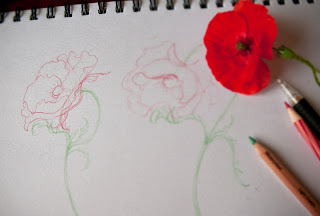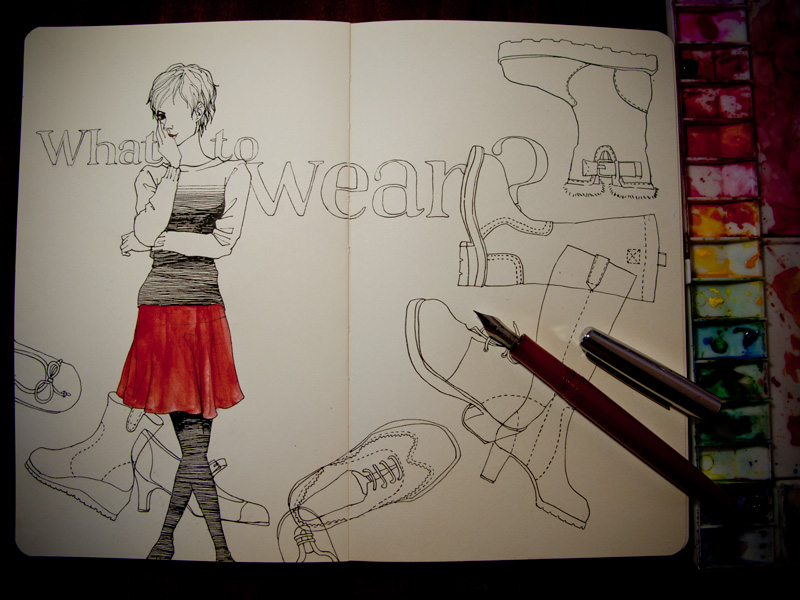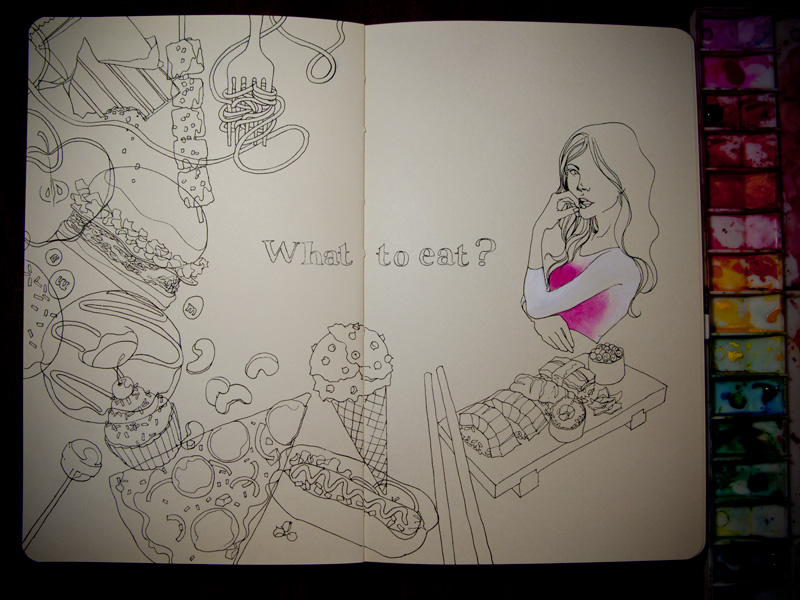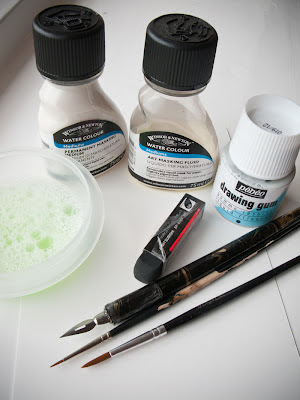Sunday 14 October 2012
[SKETCHBOOK] Colours of Beetles
Yesterday I stumbled upon amazing photographs of colourful beetles by Christopher Marley. They were such pleasure in my eyes and I thought I want those beetles leave their colours in my moleskine sketchbook as well. Happy Sunday! :)
Tuesday 9 October 2012
Monday 8 October 2012
[WIP] A Red Poppy for A Challenge
 A challenge from Spoonful Magazine; a flowers to be interpreted individually. I am happy that I got the red poppy to work on and happier still that at this season I was able to find the specimen in the wild.
A challenge from Spoonful Magazine; a flowers to be interpreted individually. I am happy that I got the red poppy to work on and happier still that at this season I was able to find the specimen in the wild.The red poppy is a symbol of Remembrance. The first and the simplest idea that came to my mind was just personifying it with a gesture of remembering. I made a quick sketch to have the proper gesture for the poppy while imaging a fuzzy watercolour washes to represent a flow of memories.
Starting to paint it this afternoon, I was not sure how detailed I have to work it on and I am still wondering how to have the detailed-botanical look and the fuzzy washes in harmony. Any suggestion?
Saturday 6 October 2012
[SKETCHBOOK] Esterbrook Fountain Pen
For a few weeks, I was quite obsessed with fountain pens. After struggling with my own reason, finally I bought a new Noodler's Ahab and an old Esterbrook fountain pen (unfortunately the ahab pen came with a broken o-ring, so I am still waiting for the replacing part to try it). Yesterday I started playing with the 'vintage' Esterbrook pen and enjoyed it much! Done without pencil, just the fine nib pen.




Tuesday 2 October 2012
[TIPS] Cherry Blossom: The Fear of Masking Fluid
Last week, I and a friend, a wonderful botanical artist, had a
chat.
She was working on an illustration of lovely streaked red-yellow apples
with light brown spots spread over the fruits. When I saw her specimen, I
immediately thought of using masking fluid for the light brown spots,
but
she said she was afraid of using it since masking fluid tends to ruin
her works. A few years ago, I will say the same. Using masking fluid
is an easy way to leave detailed or intricate white spaces but it can
also ruin my hard work when applied inappropriately.
How to avoid masking fluid from ruining your work?
 1. Masking fluid is not suitable for regular paper, such as cartridge paper, regular sketchbook, Padalarang
paper, etc. These papers would be peeled off when I removed
the masking. Test the masking fluid on the watercolour paper before
applying to a real painting. I found that I need to be more careful with
cold-pressed paper than hot-pressed one when rubbing masking fluid.
1. Masking fluid is not suitable for regular paper, such as cartridge paper, regular sketchbook, Padalarang
paper, etc. These papers would be peeled off when I removed
the masking. Test the masking fluid on the watercolour paper before
applying to a real painting. I found that I need to be more careful with
cold-pressed paper than hot-pressed one when rubbing masking fluid.
2. Masking fluid must be applied
to a perfectly dry paper and removed only when a painting is completely dry. The wrong choice of time in applying/removing masking fluid is the main reason of ruining a work.
3. Never use a fine brush! I use my inexpensive synthetic brush (actually I got it free from buying a watercolour pencil set) or a dip/ ruling pen.
4. Dip the brush into liquid dish soapy water,
rinse slightly and then wipe it before and after using the masking
fluid. I used to ruin my brushes with masking fluid but since I treat the brush regularly and repeat the soap step before applying more masking, I never clog my brushes anymore.
5.
Make sure the masking fluid is completely dry before putting a paint or
glazing the
paper. Be careful with thick masking fluid, it may look dry on the
outside
but wet inside, the brush's pressure can scrape the paper and spread the
fluid out. Masking fluid will be more transparent once it's dried.
6. From a completely dry painting/paper, gently remove masking fluid by rubbing it off with dry and clean fingers or rubber eraser. Be careful with a greasy finger, it can smear paint onto the newly uncovered area.
7. Pat down the painting to make sure all the masking fluid removed. I check any missed spots by running my fingers lightly across the paper surface.
7. Pat down the painting to make sure all the masking fluid removed. I check any missed spots by running my fingers lightly across the paper surface.
Masking
fluid made my painting process on this Cherry blossom much easier.
The masking retained the tiny white area of the stamens and carpels of
the flowers while I was painting the other area freely, putting darker
shadow or making patterns and veins. For this painting, I used Winsor
& Newton masking fluid. You can read on another post about the brand of
masking fluid I use HERE.
I used Fabriano Artistico hot-pressed paper and let the masking stay for about a week without any trouble removing it.
Subscribe to:
Posts (Atom)








